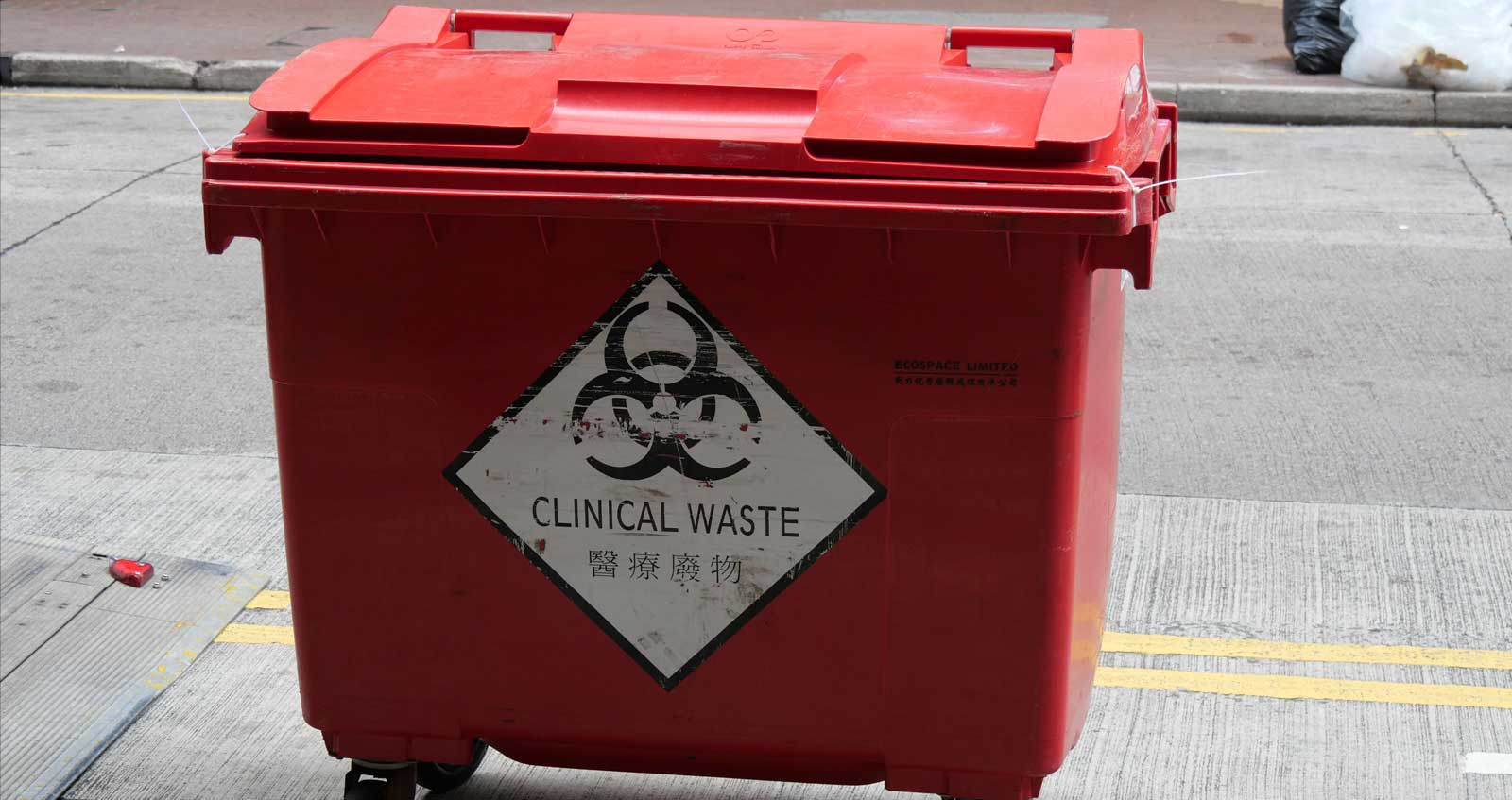Understanding the Various Sorts Of Waste Disposal Strategies
In the world of waste monitoring, the range of disposal methods readily available today is vast and varied, each approach serving an unique purpose in addressing the difficulty of garbage disposal. click here. From recycling techniques that intend to offer new life to products, to the elaborate procedures of hazardous waste administration, the landscape of garbage disposal is complicated yet crucial for ecological sustainability. Recognizing the nuances of these different methods not just drops light on the relevance of liable waste monitoring however also prompts us to rethink our approach towards waste disposal in a swiftly advancing globe

Recycling Approaches
Reusing techniques are critical for sustainable waste monitoring methods in both domestic and commercial setups. medical waste removal service. By carrying out reliable recycling techniques, a substantial amount of waste can be drawn away from garbage dumps, conserving natural deposits and decreasing the ecological influence of manufacturing processes
In property locations, curbside recycling programs play a crucial duty in motivating families to separate recyclable materials from general waste. Materials such as paper, plastics, glass, and metals can be sorted and accumulated for handling right into new products, decreasing the demand for basic materials and energy-intensive manufacturing processes.
Industrial facilities additionally rely on recycling techniques to reduce waste generation and advertise a circular economy. By implementing closed-loop systems, organizations can recycle materials within their manufacturing procedures, minimizing costs and ecological impact. medical waste disposal. Additionally, industrial recycling programs typically involve partnerships with specialized recycling facilities to make certain that products are effectively sorted, processed, and reintegrated into the supply chain
Composting Strategies

Oxygenated fixed heap composting includes blending organic waste products in a large stack and routinely turning it to make certain correct aeration. This method is fit for smaller-scale operations and houses.
In-vessel composting includes placing natural waste in a closed container with controlled conditions for temperature level and aeration. Windrow composting includes developing long rows of natural waste and frequently transforming them to advertise decomposition - medical waste removal.
Landfill Disposal
Landfill disposal is a typically utilized method for managing waste that can not be recycled or composted. It includes burying waste in designated areas of land, with correct precautions to avoid environmental contamination. Landfills are crafted facilities made to isolate waste from the surrounding setting. The waste is compressed and covered with dirt daily to decrease odors, prevent bugs, and lessen the spread of clutter. Modern land fills are geared up with safety liners and keeping an eye on systems to avoid leakage of damaging compounds right into the dirt and groundwater. Methane gas, a result of decomposing natural waste in landfills, is typically collected and used as a source of renewable resource. In spite of developments in land fill modern technology, worries continue to be regarding the long-term ecological effects, such as groundwater contamination and greenhouse gas exhausts. Efforts to lower reliance on landfills consist of advertising waste decrease, recycling, and discovering alternative garbage disposal approaches to lessen the ecological footprint linked with standard landfill disposal practices.

Waste-to-Energy Incineration
Incineration of waste for energy generation is an approach increasingly being thought about as an alternative to typical garbage dump disposal methods. Waste-to-energy incineration includes the combustion of waste materials at high temperatures, normally in specialized facilities developed to create electrical energy or heat via the procedure - click here. This technique not only minimizes the quantity of waste that would otherwise be destined for garbage dumps but also takes advantage of the heat generated throughout incineration to develop power
Among the crucial advantages of waste-to-energy incineration is its capacity to produce electricity while minimizing the ecological impact compared to traditional land fill disposal approaches. By converting waste right into energy, this technique helps in minimizing greenhouse gas exhausts and reliance on fossil fuels for power generation. In addition, waste-to-energy centers are outfitted with innovative air pollution control innovations to minimize potential ecological toxins launched throughout the burning process.
Hazardous Waste Management

Taking into consideration the vital value of liable waste monitoring practices, specifically in the world of environmental sustainability, the focus currently changes towards the detailed domain of Contaminated materials Monitoring. Harmful waste poses substantial dangers to both human health and wellness and the setting, demanding specific handling and disposal techniques. Usual instances of contaminated materials consist of chemicals, batteries, chemicals, and electronic waste.
Contaminated materials Monitoring includes the recognition, collection, transport, treatment, and disposal of materials regarded possibly harmful or dangerous. This procedure needs adherence to strict guidelines and guidelines to alleviate damaging influence on ecological communities and public health and wellness. Various techniques are employed in managing contaminated materials, including recycling, protected landfills, encapsulation, and chemical therapy.
Proper Dangerous Waste Administration is critical for protecting against contamination of dirt, water sources, and air contamination. It is essential for sectors, laboratories, healthcare centers, and various other generators of dangerous waste to apply durable monitoring techniques, training programs, and emergency Recommended Reading situation response intends to ensure the secure handling and disposal of these materials. Failing to handle contaminated materials suitably can have far-reaching effects, highlighting the importance of attentive and responsible practices in this area.
Verdict
To conclude, waste disposal strategies play a crucial function in managing and minimizing the impact of waste on the setting. From reusing and composting to land fill disposal and waste-to-energy incineration, each method has its very own advantages and restrictions. Proper management of harmful waste is likewise necessary to secure public wellness and the atmosphere. It is necessary for individuals and markets to comprehend the different garbage disposal strategies available and select the most appropriate method for lasting waste management.
In the world of waste monitoring, the selection of disposal strategies offered today is vast and varied, each technique offering a distinctive objective in resolving the obstacle of waste disposal. click here. From recycling approaches that intend to provide new life to materials, to the complex procedures of unsafe waste administration, the landscape of waste disposal is intricate yet crucial for environmental sustainability. Comprehending the nuances of these different strategies not only loses light on the value of liable waste administration but also triggers us to rethink our technique towards waste disposal in a swiftly evolving world
Efforts to reduce dependence on garbage dumps include advertising waste reduction, reusing, and exploring alternative waste disposal approaches to minimize the ecological impact connected with traditional land fill disposal techniques.
It is essential for individuals and industries to understand the various waste disposal techniques readily available and choose the most suitable method for lasting waste administration.
 Spencer Elden Then & Now!
Spencer Elden Then & Now! Jenna Von Oy Then & Now!
Jenna Von Oy Then & Now! Danica McKellar Then & Now!
Danica McKellar Then & Now! Monica Lewinsky Then & Now!
Monica Lewinsky Then & Now! Mike Smith Then & Now!
Mike Smith Then & Now!